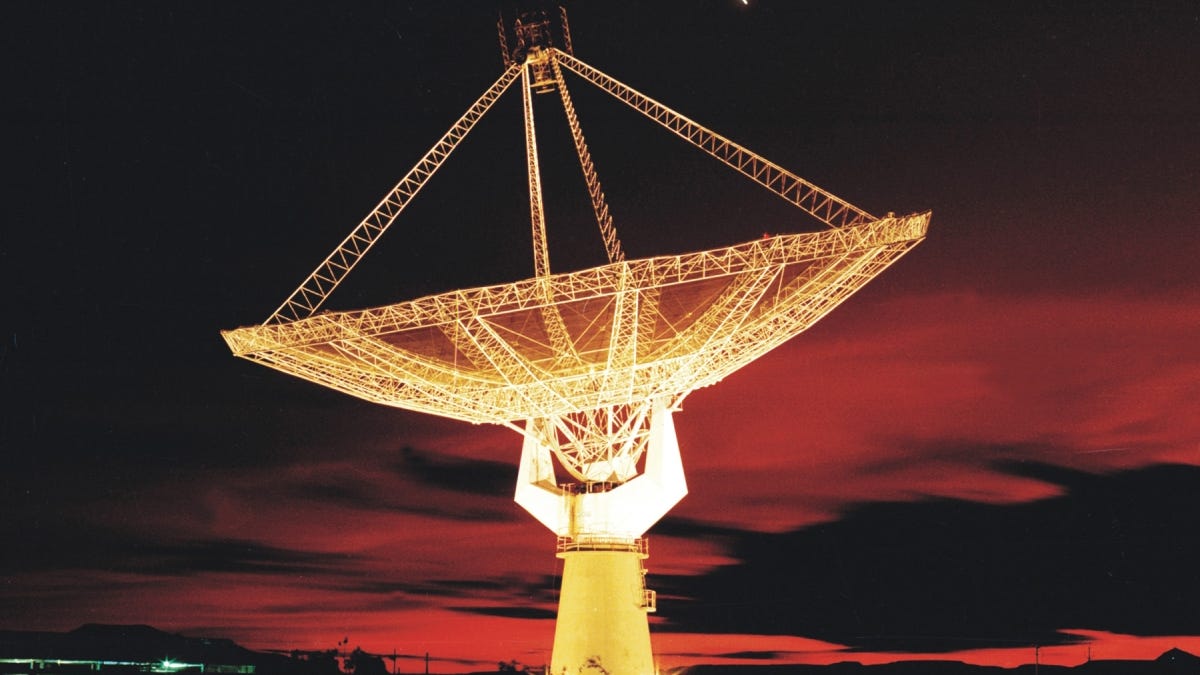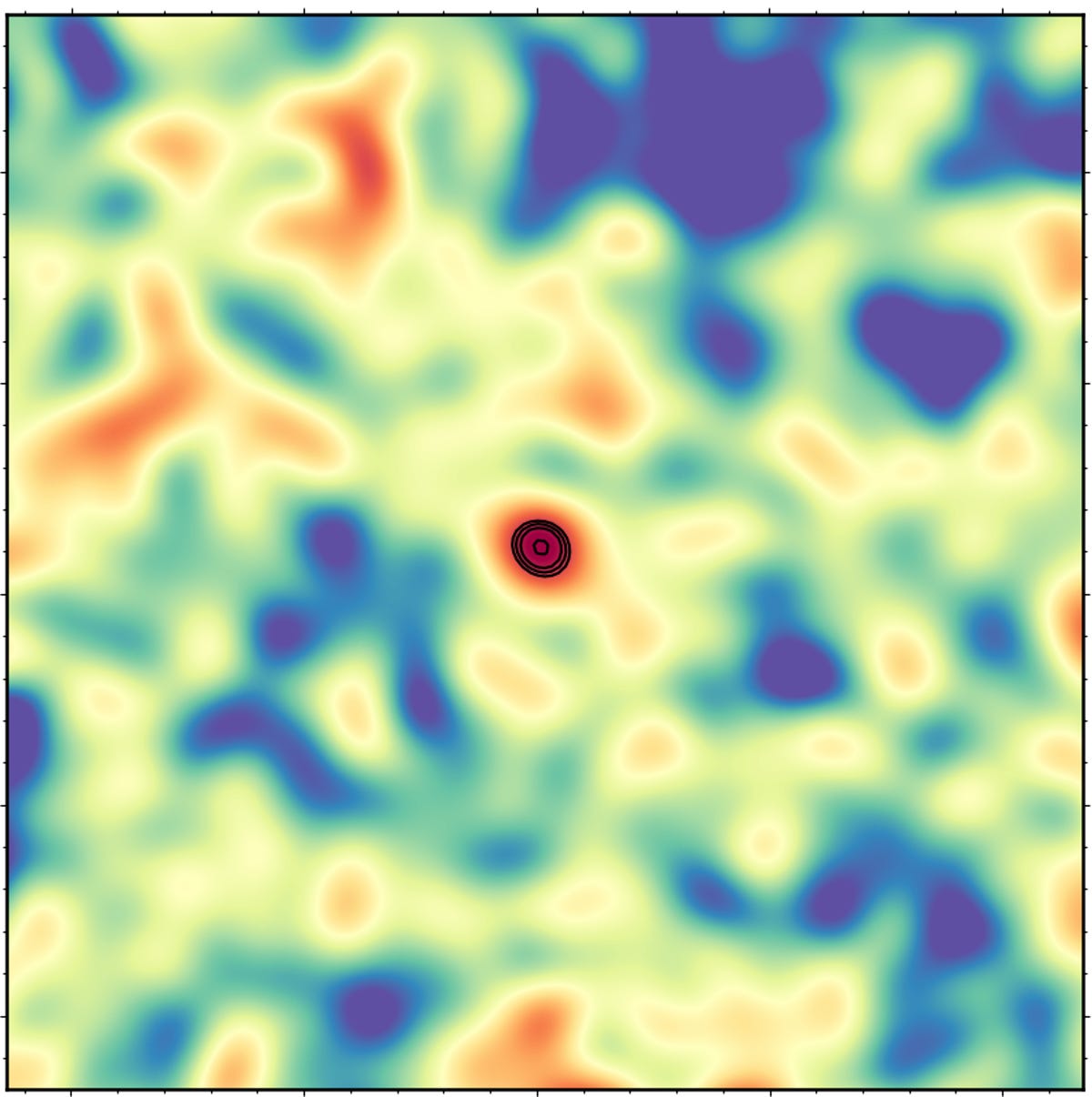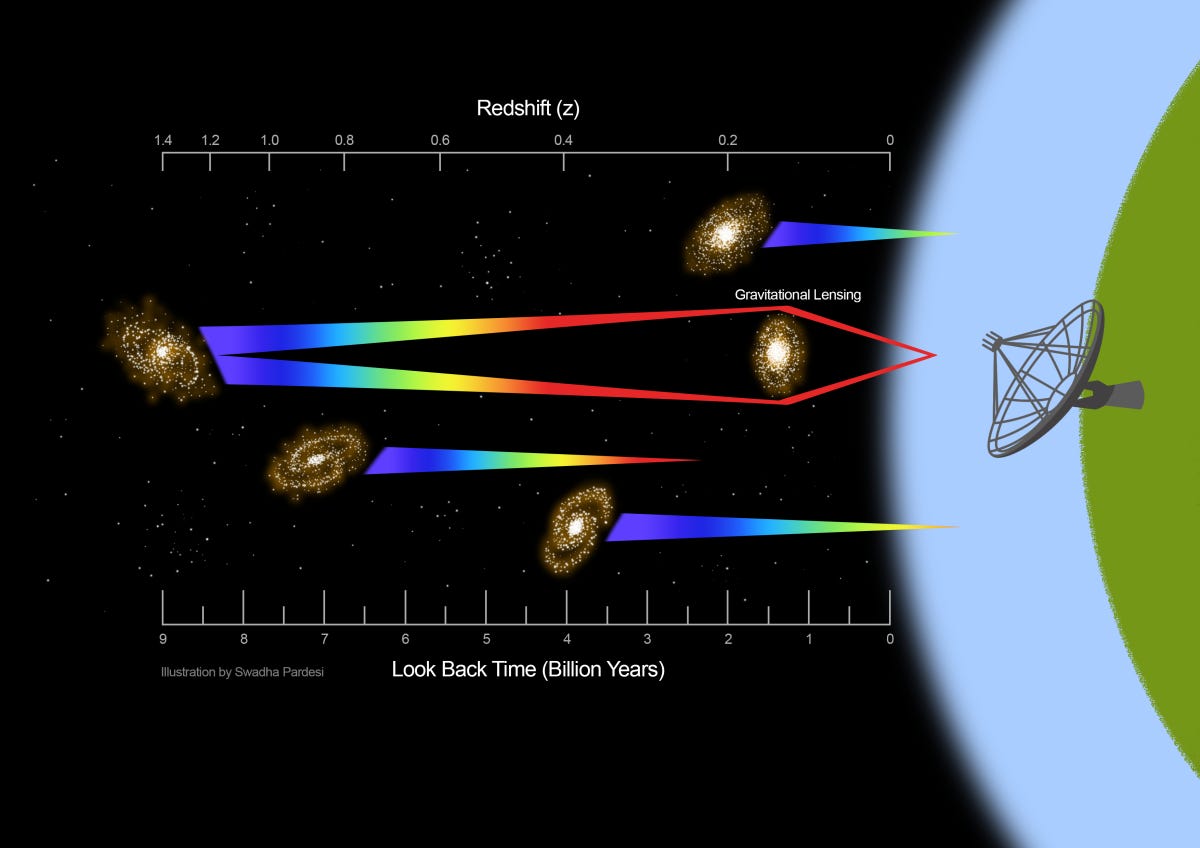
One of the dishes of the Giant Metrewave Radio Telescope near Pune in Maharashtra, India.
National Centre for Radio Astrophysics
Scientists have managed to do something we’d previously thought impossible — capturing a special kind of radio signal from a galaxy that floats nearly 9 billion light-years away from Earth, they announced Monday in a journal known as the Monthly Notices of the Royal Astronomical Society.
I’m talking about a realm with stars, maybe planets, probably black holes — the whole nine yards of cosmic goodies — that existed when the universe was only about 5 billion years old. That’s tremendously young; an era long before our solar system materialized and life as we know it came to be.
This marks the first time anyone has caught this type of radio signal — associated with a wavelength known as the 21-centimeter line — from such an utterly massive distance.
“It’s the equivalent to a look-back in time of 8.8 billion years,” Arnab Chakraborty, a cosmologist at McGill University’s Department of Physics and co-author of a study on the detection, said in a statement.
Why we love the 21-cm line
No matter where you find yourself in the universe, you’ll probably end up around some sort of hydrogen.
No. 1 in the periodic table and No. 1 in our hearts (literally, because our bloodstream carries the stuff) hydrogen is considered the most abundant element in our cosmic expanse. You’ll find it in water; in your body; in the air; in the sun. Hydrogen is everywhere. All types of it. And it makes sense why.
Different elements are pretty much different combos of protons and electrons — and hydrogen has exactly one of each. It’s simple. Clean. The perfect element.
OK, I’ll stop ranting about hydrogen now. The point here is, because hydrogen permeates our universe, it’s a terrific way to map-out where everything is and understand how the cosmos is evolving. You just have to follow the hydrogen — neutral hydrogen gas, to be exact.
“The reservoir of cold atomic neutral hydrogen gas provides the basic fuel for star formation in a galaxy,” the study authors wrote. “Understanding the evolution of galaxies over cosmic time requires knowledge of the cosmic evolution of this neutral gas.”
And the 21-cm line is a radio wavelength emitted by a process carried out by none other than… hydrogen. In fact, when it was first officially coined in 1951, it was literally called the hydrogen line.
So with this in mind, astronomers basically point their radio telescopes at the sky, pick up a bunch of 21-cm line wavelength signals and try to figure out where they’re coming from.
Because of the 21-cm line, for instance, we’ve been able to gawk at the Milky Way’s stunning spiral structure, observe the ins and outs of our galactic neighbor, Andromeda, and survey the sparkly hazes of the Magellanic Cloud duo. But what these three realms have in common is that they’re right next door. We live in one, and the other two are quite nearby as well — Andromeda is only about 2.5 million light-years away.
“A galaxy emits different kinds of radio signals. Until now, it’s only been possible to capture this particular signal from a galaxy nearby, limiting our knowledge to those galaxies closer to Earth,” Chakraborty said.
However, the 21-cm line has sometimes offered a peek into faraway corners of the universe — previous record-holders for this very special signal include radio waves originating some 5 billion years away. But nothing really compares to the team’s latest detection that almost doubles such a distance.
Tapping into the Giant Metrewave Radio Telescope in India, Chakraborty and fellow researchers caught a 21-cm line radio signal from a galaxy nearly 9 billion light-years away with a clunky little robot name — SDSSJ0826+5630 — that allowed them to observe things like gas composition in the extraordinarily distant menagerie of stars.


This is an image of the radio signal from the distant galaxy. Don’t think too hard about it. Just realize that this pic depicts something billions of light-years away from where you’re sitting.
Chakraborty & Roy/NCRA-TIFR/GMRT
Most notably, they saw that the atomic mass of this particular galaxy’s gas content equals almost twice the mass of stars visible to us, meaning it’s a lot sparklier than once thought.
General relativity strikes again
“Thanks to the help of a naturally occurring phenomenon called gravitational lensing, we can capture a faint signal from a record-breaking distance,” Chakraborty said.
Gravitational lensing, in a nutshell, refers to how light (visible or not) emanating from stars or other spacey objects gets warped and distorted while passing by a highly gravitationally dense object. It’s a consequence of Einstein’s mind-bending theory of general relativity — which you can read about in much more detail here.
In this case, the gravitationally lensed “light” is the 21-cm line signal, and the hyperdense object is an entire galaxy that sits between the signal’s source and the observing team’s telescope. “This effectively results in the magnification of the signal by a factor of 30, allowing the telescope to pick it up,” Nirupam Roy, an associate professor in the department of physics at the Indian Institute of Science and co-author of the study, said in a statement.


An Illustration showing detection of the signal from a distant galaxy, gravitationally lensed. Redshift refers to how far away something is from Earth’s vantage point. Higher redshift values means something is farther away. This signal falls around redshift z ~1.3.
Swadha Pardesi
That’s huge because signals like this one generally start to fade as they travel through the void of space, making it rather hard for scientists to catch them before they vanish.”This will help us understand the composition of galaxies at much greater distances from Earth,” Chakraborty said.
And going forward, according to the research team, these results demonstrate that combining gravitational lensing with radio astronomy could, one day, unveil a flurry of secrets about the early universe. Perhaps it’ll reveal a tangle of cosmic trails we never knew to follow.
